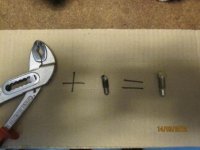Not a favorite subject for any of us. Some thoughts...
1. your favorite chemical such as Liquid Wrench, Aero-Kroil, Pb-Blaster or for the frugal, a 50-50 mix of acetone and auto trans fluid is liked by some. I tried it, and it smells nasty.
2. Heat, lots of it, on the aluminum surrounding the screw.
3. Impact to loosen the rust grip.
4. Try slowly tightening the screw. Counterintuitive, but sometimes it's what's needed to break the grip of the tinworm. Once freed, back and forth, back and forth, looser by just a bit each time.
5. Getting drastic, drill it out using a reverse bit. I recently had to drill out the 5mm socket head cap screw that tied the front brake rotor to the hub, in my daughter's E30. Start with a small bit as a pilot, then gradually larger; at some point tap in an Easy-Out but be VERY careful as these are hard but more to the point they are BRITTLE and will snap off if you don't apply balanced, even, on-axis torque. Worked for me in the end, though, I'm happy to say.
6. Ask yer pals on the list.
7. Prayer, foul language, inappropriate force. For the truly desparate, only, get your "mechanic" friend to have at it. When he breaks something, throw a fit and make him buy a new one. note that I've not trie this, and it's really not recommended... but once something is broken you have nothing to lose by really going at it. I remember a water pump once on my 533i, the cooling fan nut (yes I know it is reverse threaded) had me doing unseemly things to it. In the end, it yielded to superior force: a 3-pound sledge and massive 8" vise.

